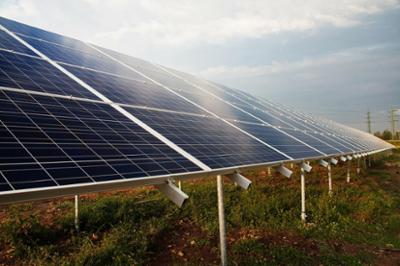

What is agrivoltaics?
In order to achieve a more sustainable planet, all the elements contained in it have to join their forces to improve. An example of this is agrivoltaics, which combines photovoltaic energy with agricultural production, to benefit everyone.
If we look at the least contaminating energies that we most relate with clean energy, one of them is probably the energy generated from solar panels. Incidentally, these elements are often found in the midst of nature, in open spaces and in areas that receive a large amount of solar energy. This is why, thanks to those places where there is agriculture, it was decided to merge them, with the aim to achieve a total benefit for the planet.
This is how agrovoltaic energy came about, which brings together the best of photovoltaic energy and agricultural production.
How is it used?
In practice, it uses the resources derived from generating photovoltaic energy for agricultural development.
Thanks to solar panels, the ground where they are set up is kept moister and protected from direct sunlight, thus providing cooler and more productive environments for plant growth. Also, thanks to the process of water transfer from the crops to the environment, cooler areas are generated, which are beneficial to solar panel operation.
Thanks to this union, both parties take advantage of the resources of the other, which greatly benefits them.
Therefore, agrivoltaics is the benefit generated by the shade created by the solar panels and their use. These areas are ideal for producing various crops, with a speedy growth. The impact that the solar panels may have on the ecosystem is offset by planting crops and expanding ecosystems for animals.
This means that anything that is generated for clean energy that is environmentally-friendly is important if we wish to progress towards a cleaner planet, as we saw in the article on sustainable energy sources where we discussed the different types such as biomass, wind energy, hydroelectric energy, geothermal energy and solar energy.
Within the framework of this field, the perfect area for learning about everything new that is happening around clean energy is Global Mobility Call.
Multiple advantages to make the most of resources
This fusion leads to a multitude of positive synergies, both for the environment and for society, thanks to its multimodality and maximisation. But this is not applicable exclusively to natural environments or in wide-open spaces where solar panels are usually installed. They are also useful for private individuals.
Increasingly more houses or new urban areas install photovoltaic panels. We can add to this the government support for the installation of these elements, which has encouraged many people to install solar panels in their homes and, therefore, increased agrivoltaic development.
Another advantage is that it is zero-waste. No noise pollution or physical waste. This reduces any negative impact on the environment and does not create any waste product that interferes in the development of agriculture and livestock, affording freedom for this type of resource.
This promotes agricultural production efficiency, and therefore increases its potential value, producing a higher crop percentage.
This is also another way to save and not use so much water. The capacity of large solar panels to provide shade is taken advantage of so that less water is used and crop production can be maintained. And thanks to this, areas that can be used for agriculture are reactivated.
Spain, key in agrivoltaics
If we look at the physical area where agrovoltaic energy can be developed, thanks to combining agriculture with solar electricity, Spain is an ideal country for this activity.
We have approximately 2,500 hours of sunlight per year, according to data from Selectra. Therefore, it is perfect for installing fields of photovoltaic panels that will convert sunlight into electricity. This excellent geolocation automatically makes our country an impeccable area for agrivoltaics and for promoting agriculture production under solar panels.





